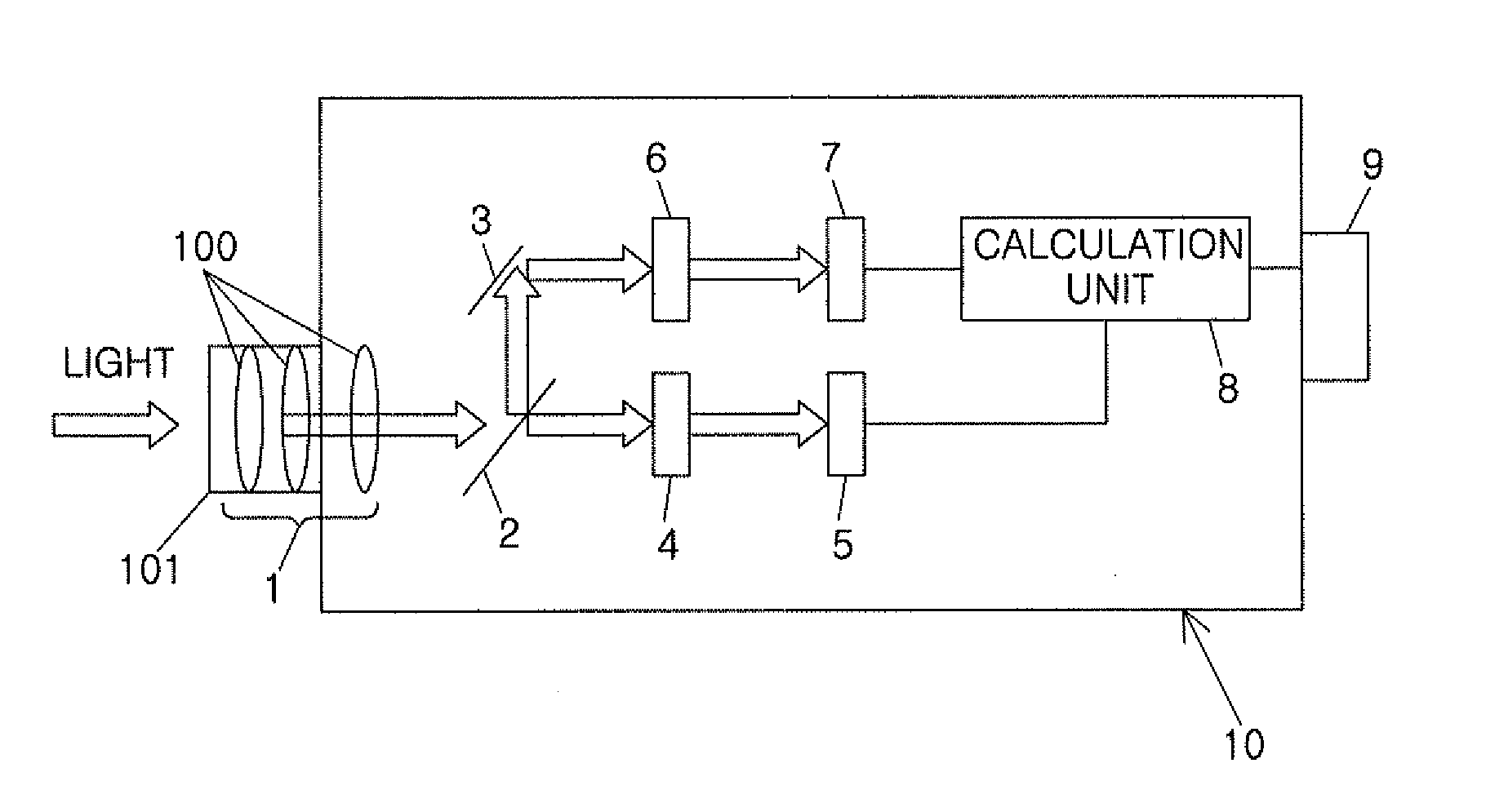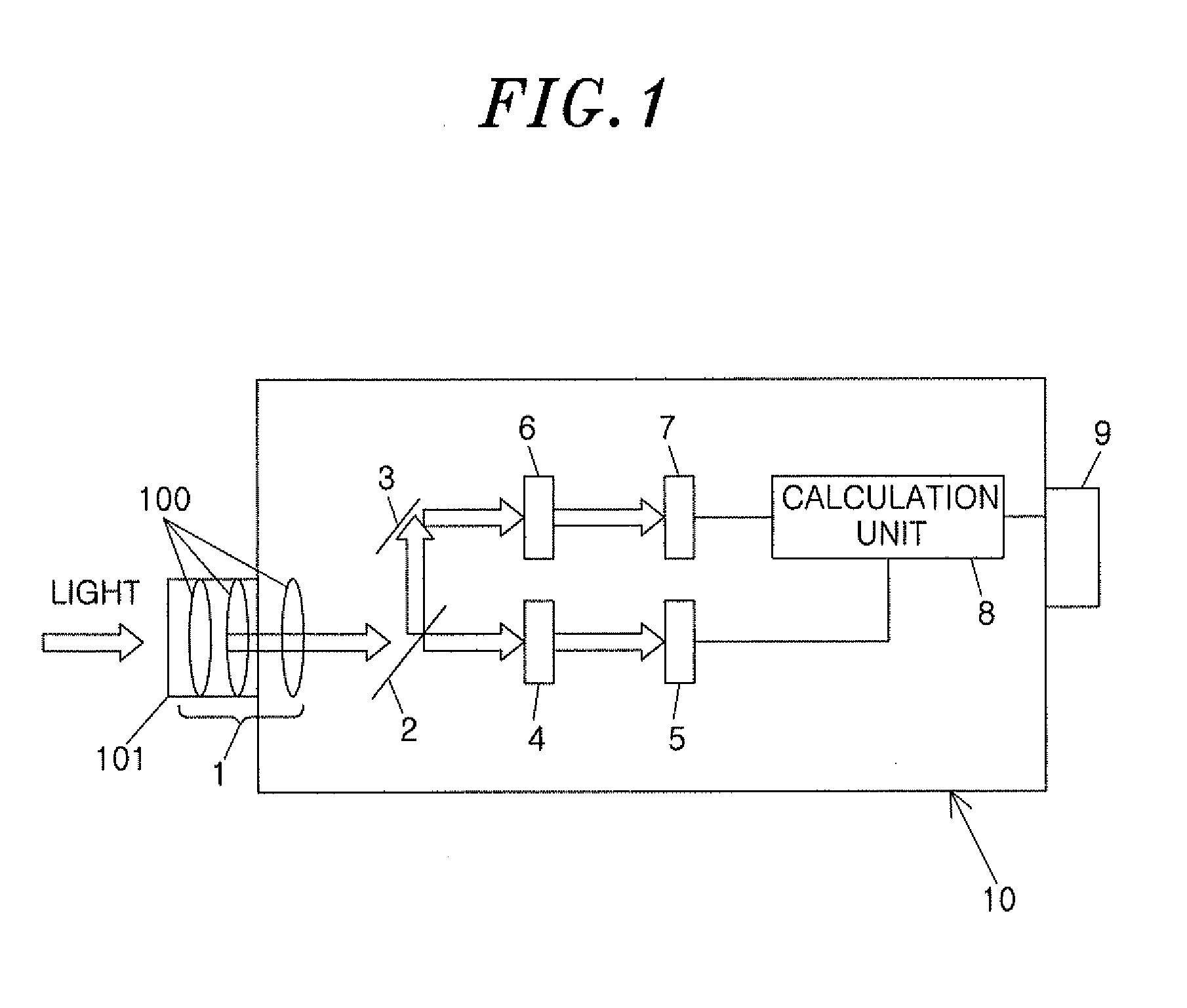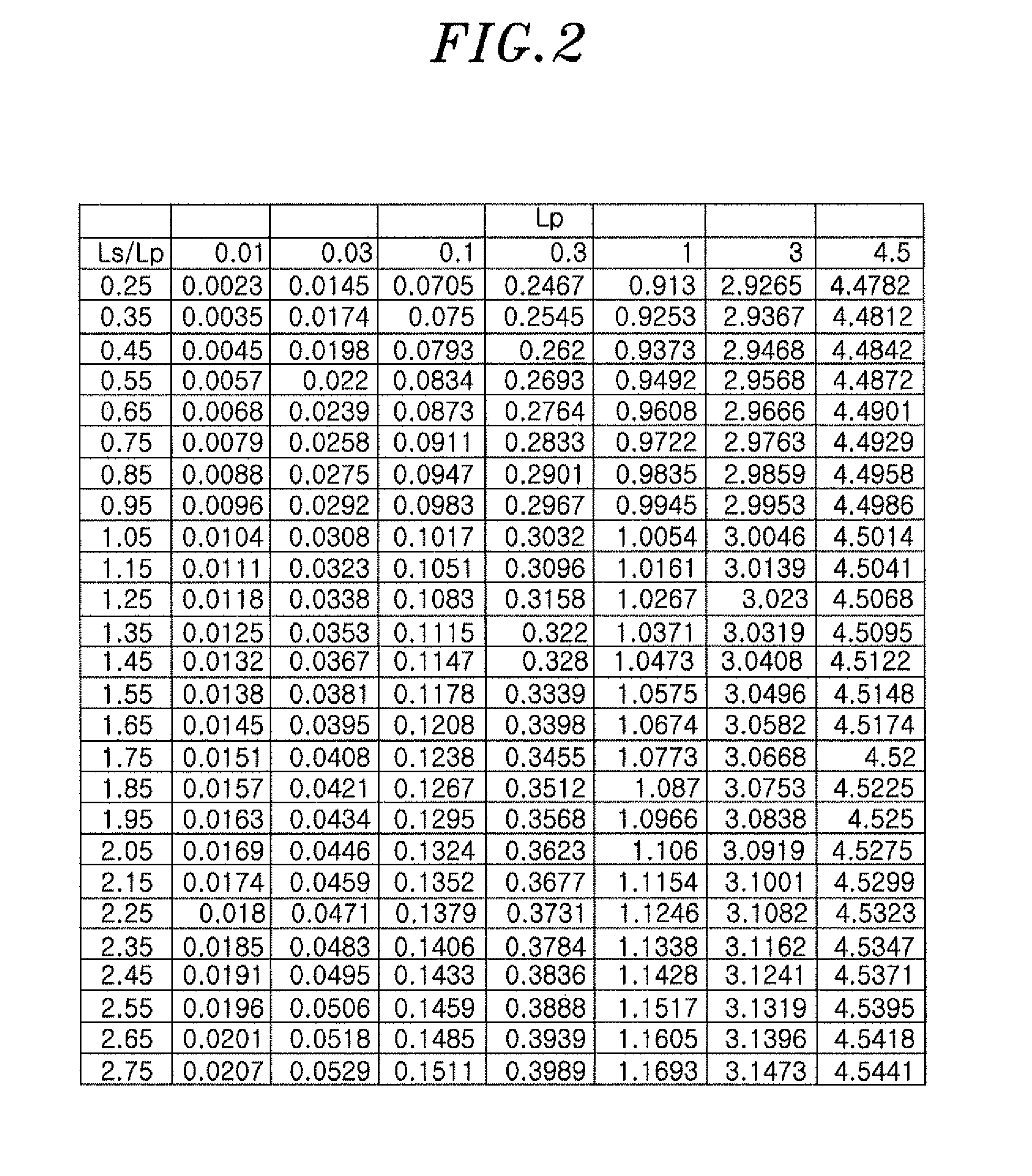Photometry device
a technology of photometry and light, applied in the field of photometry devices, can solve problems such as not being widely distributed, and achieve the effect of improving the brightness measurement accuracy
- Summary
- Abstract
- Description
- Claims
- Application Information
AI Technical Summary
Benefits of technology
Problems solved by technology
Method used
Image
Examples
first embodiment
[0014]A photometry device of the present embodiment is, as shown in FIG. 1, provided with an optical part 1, a half mirror 2, a mirror 3, a first light filter 4, a first photoelectric converter 5, a second light filter 6, a second photoelectric converter 7, a calculation part 8, a display 9, and a housing 10.
[0015]The housing 10 has a box-like shape and is made of a synthetic resin or a metal. Light is introduced in the housing 10 through a hole opened in the left side thereof.
[0016]The optical part 1 includes a plurality of convex lenses 100; and a cylindrical body 101 supporting the convex lenses 100 and closing the hole of the housing 10. Accordingly, the light introduced through the hole is converged by the convex lens 100 of the optical part 1.
[0017]The half mirror 2 is disposed on an optical path of the optical part 1, and splits the light converged by the optical part 1 into two parts. On one optical path branched by the half mirror 2, the first light filter 4 is disposed. Th...
second embodiment
[0025]A photometry device of the present embodiment, as shown in FIG. 3, includes: a spectral filter 11 for dispersing incident light; a measuring part 12 for measuring intensities (luminance) of the lights dispersed into a plurality of wavelength bands at each wavelength band; and a calculation part 13 for calculating mesopic vision luminance. The same reference numerals are assigned to the common components to the photometry device of the first embodiment, and the description thereof will be omitted.
[0026]The spectrum filter 11 is configured of a prism, and divides (disperses) incident light into a plurality of wavelength bands by utilizing its different refractive indexes depending on the wavelengths of the light. The measuring part 12 has a plurality of photoelectric transducers (not shown) corresponding to each of the wavelength bands of the light dispersed by the spectrum filter 11, and a plurality of amplifiers (not shown) amplifying output voltages of the respective photoele...
PUM
 Login to View More
Login to View More Abstract
Description
Claims
Application Information
 Login to View More
Login to View More - R&D
- Intellectual Property
- Life Sciences
- Materials
- Tech Scout
- Unparalleled Data Quality
- Higher Quality Content
- 60% Fewer Hallucinations
Browse by: Latest US Patents, China's latest patents, Technical Efficacy Thesaurus, Application Domain, Technology Topic, Popular Technical Reports.
© 2025 PatSnap. All rights reserved.Legal|Privacy policy|Modern Slavery Act Transparency Statement|Sitemap|About US| Contact US: help@patsnap.com



